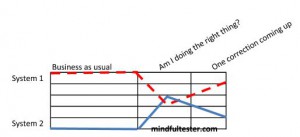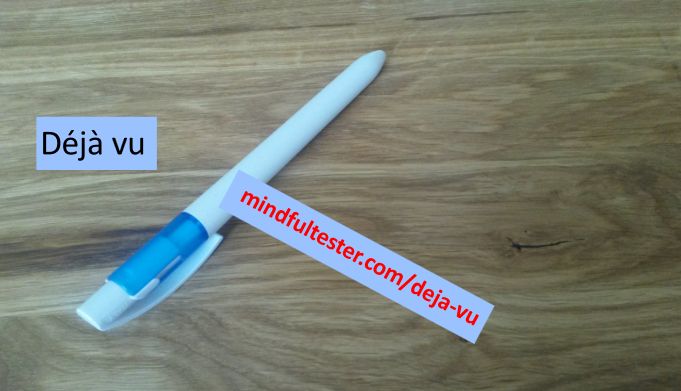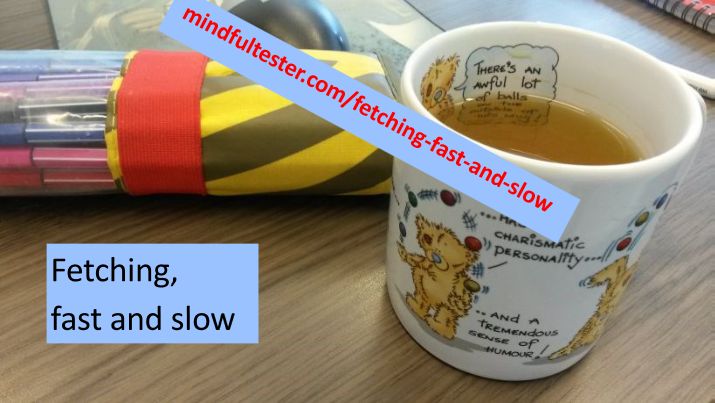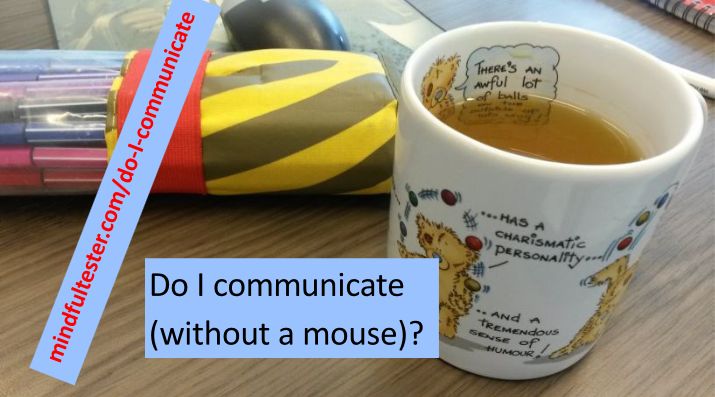Story number 1
My wife and I were enjoying the sun set. We had settled ourselves on a bench with cushions on the beach. A waiter came in our view:
“What would you like to drink?”
My wife answered:
“One hot chocolate milk please.”
“With or without whipped cream?”
“Without whipped cream.”
Then it was my turn to order a drink:
“One tea without whipped cream. ”
When the waiter went away, my wife remarked something about my joke.
After a few minutes the waiter came back with two hot chocolate milks without whipped cream.
“I did not order this beverage.”
“You ordered a hot chocolate milk without whipped cream. ”
“I ordered a tea without whipped cream. ”
The waiter was silent for a few moments. Then he offered me to bring me a tea.
Story number 2
When I was looking for a parking space for the car, one of my kids said:
“That car has the same colour.”
I said something like “A huh”.
I parked the car and my wife left to do some fast shopping. I stayed with the kids. After a few minutes I noticed movement in the rearview mirror. My wife had changed her coat, hair colour and glasses. And she had shopped.
“Something is wrong.” flashed through my mind. I turned around to have a good look. The woman looked me straight in the eyes. She was surprised. Her view shifted to the license plate. Then she looked to me with an apologising smile.
She slowly turned around, looking for her car. Then her eyes fell on a car with the same colour, the same model and the same brand. And off she went.
Breakdown
The waiter and the woman have some things in common: first they used the auto pilot (System 1). Then they forced themselves to think (System 2). This leads to the following graph:
Back to business
The following story is fiction. So enjoy.
Steve was waiting for things to happen. For more than one hour it was just him and his pen. The other stuff was boring: the same people moving on the screens in the same patterns. He noticed, that a pizza delivery boy parked his car on the parking lot. He just knew, that it was a pizza delivery boy. While many of his colleagues were regarding strangers as potential criminals, he just looked and knew.
The young man came to his desk:
“One large pepperoni pizza for mister Neal.”
“Sorry”, Steve replied. “You are not allowed to deliver, because your delivery is not on the list.”
Then a phone call came in.
“Hi Steve, John here. I forgot to notify you, that a pizza would be delivered.”
Steve checked off the following points:
- It was the internal phone number of John.
- He had an American accent with Scottish accent.
- He was always late with meal notifications.
“Sure, no problem. One pizza coming up.”
“Fine. I’m hungry.”
Steve thought: “He always is.”.
He said to the pizza delivery boy:
“You can go the 6th floor. Mister Neal is wearing a T shirt.”
Steve thought: “He always is.”.
The young man nodded and entered the elevator.
Outside a car stopped. The same man came to Steve’s desk. Steve looked at the first car, which was still parked outside. There was something wrong. The pizza delivery boy looked genuine.
“He’s real.”, flashed through his mind.
Steve asked: “One large pepperoni pizza for mister Neal?”
“That’s right. Can I deliver the pizza?” with the same voice.
Steve looked at the monitor, which showed the same delivery boy in the elevator.
He looked to the pizza delivery boy.
“I have to write down the delivery time.”, while tapping 3 times on his watch. 3 short taps is S in morse: Social engineering threat. He felt 3 short vibrations of his watch. Now Steve had 3 minutes to evaluate the situation, before the alarm went off.
In the meantime another pizza delivery boy with the same face had come to his desk:
“One large pepperoni pizza for mister Neal.”
The same face, the same suit and the same voice.
“He’s not an actor. The body language is from a reluctant man trying to earn extra money for his study.”
Steve looked to the two pizza delivery boys standing for his desk: they looked like twins.
John was a hungry programmer: he ordered at most two pizzas at a time. Steve recalled, that John had ordered just one pizza. He pressed his two hand palms on the desk to push himself up. This way he concealed two small movements. With his right index finger he pushed the Down The River button. People inside the building could only leave the building: elevators would only go downstairs; doors would only open to the hallway. Etcetera etcetera. Annoyance crept in Steve’s mind:
“This is the real thing and my intuition failed me for the first time.”
With his left index finger he locked the control panel in front of him. While Steve was standing at ease, he casually placed his right palm on his watch. The watch scanned his palm and vibrated for half a sec: the alarm was confirmed. He imagined himself as a concrete wall. Now he had to stall, until the backup would come. The guitar music from the opening scene of Pulp Fiction started to play in his head. He defocused to get a better view of the situation. This way he could see the two pizza delivery boys and the entrance at the same time. Then tensome pizza delivery boys entered the building. Packed with pizza boxes. The trumpets in his head began to play harder.




